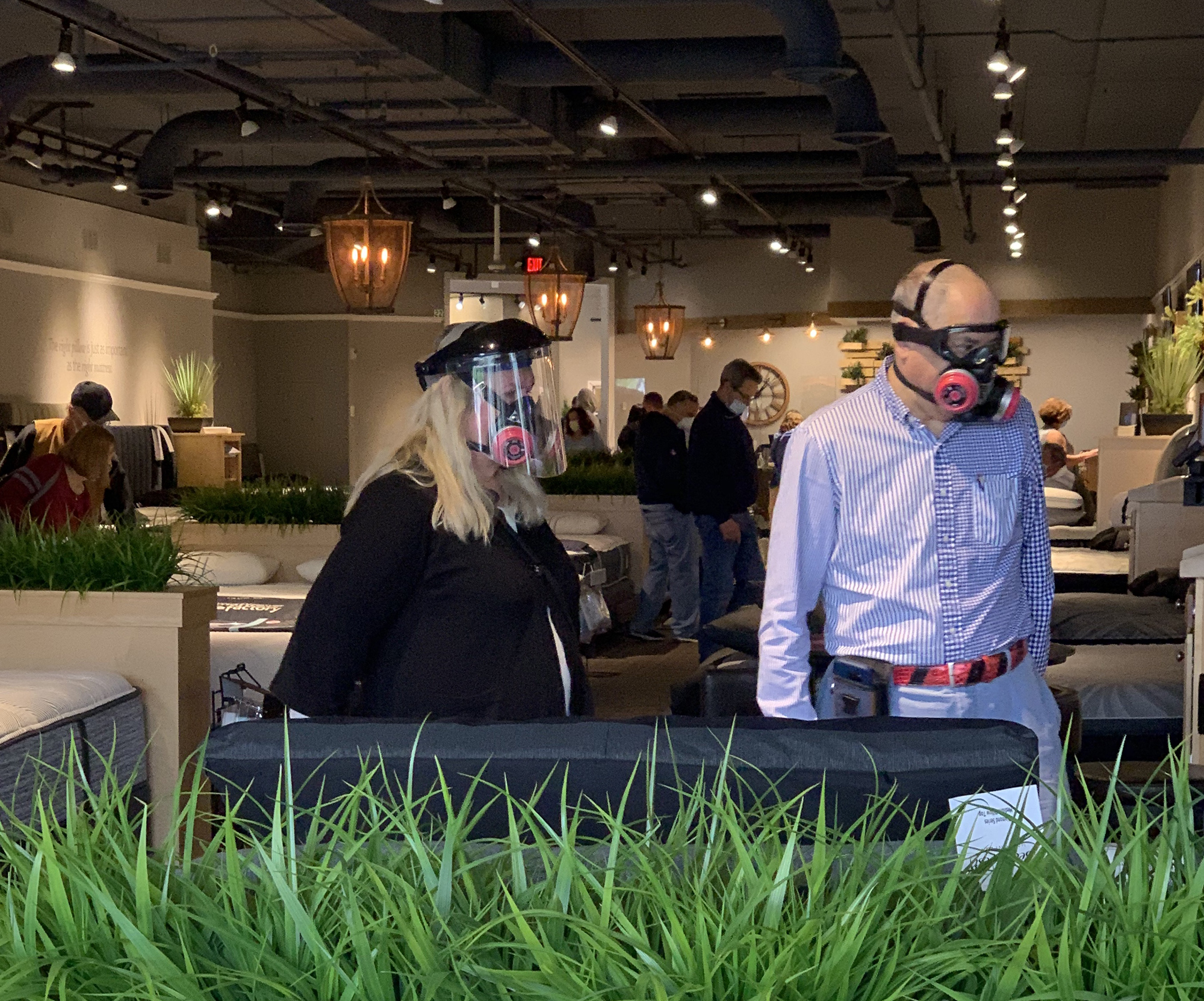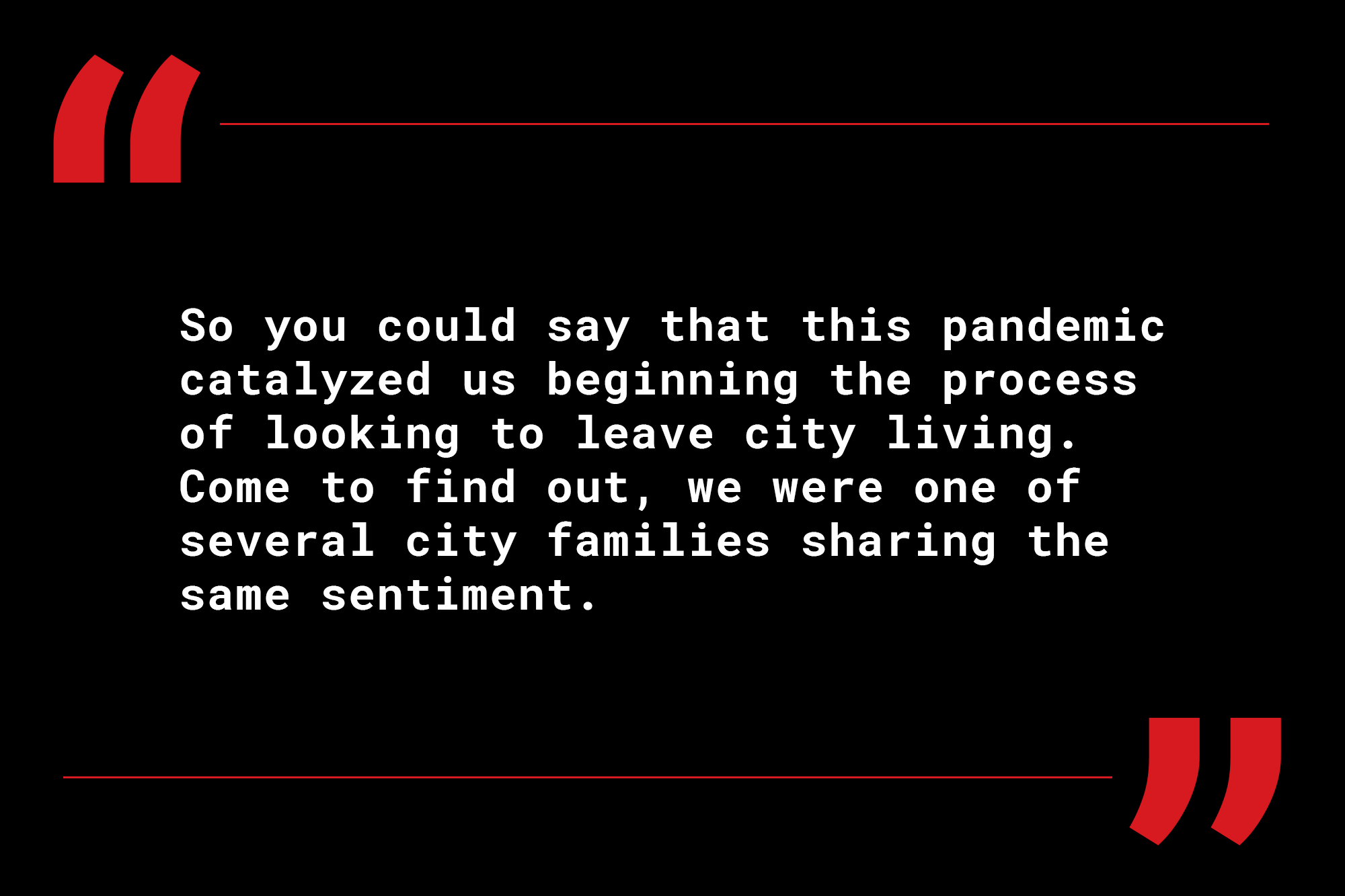Shopping for the Suburban Migration
My family and I have decided to pull the trigger. We’re moving to the suburbs…
This decision was inevitable at some point. When our son started crawling and will soon be walking, and requiring more “stuff,” our 1,300 sf condo is going to feel that much smaller. Being home 24/7 for the past few months has really highlighted this. Not having our own space to work individually – on calls or zoom meetings – it began to feel like the walls were caving in on us a bit, even despite the daily walks around the neighborhood for some fresh air. So you could say that this pandemic catalyzed us beginning the process of looking to leave city living. Come to find out, we were one of several city families sharing the same sentiment.
Being in a pandemic with the country in financial uncertainty and unemployment at record levels, we were surprised to be met with such a competitive residential market. The amount of buyers out there was way more than we anticipated, with not as much supply coming online, in some of the sought-after suburban markets. Through first-hand experience and lengthy conversations with local brokers, the millennial flight to suburban living has grown exponentially these last couple of months and it is anticipated to continue through 2020. I know 7 couples alone who have bought, or are in the process of buying, houses outside the city over the last 2 months. While some brokers are claiming it is going to be a “mass exodus” to the suburbs, that simply isn’t the case. Opportunistic buyers are also circling desirable urban markets, to find deals in areas that don’t typically have a lot of product come online and that frankly are pretty insulated from the economy and hold their value – pandemic or no pandemic. Offers are being lobbed in over asking prices, sometimes sight-unseen or following a FaceTime tour with brokers because there is such little on the market, and they need or want to secure the real estate.
I think going through this exercise in real time and seeing the amount of activity in the residential market has given me more confidence in the general Boston economy and our hopeful rebound. People will always live in cities, and personally, our hope is to return to live in the city one day as well. But for now, it’s the suburbs’ shining moment to take the stage and become the next hot thing. These discoveries have uncovered another trend that will impact retail real estate in particular – there is a lot of wealth coming out of the city into these suburban neighborhoods and villages, with millennials being at the core demographic. As such, knowing how millennials shop, eat, spend, and what is important to them as consumers, we will definitely be seeing more retail, f&b, and amenities populate town centers. We are seeing this already at Graffito, as some of the tenants we represent start to search in those dense neighborhoods. More and more people will be spending time working at home, at least a couple days per week, and will want to have their quality cafes, restaurants, small grocers, specialty stores, and retail shops close-by. “Local,” “quality” and “convenience” are probably the three top priorities when it comes to this demographic, which will drive more activity from quality tenants to start looking out where this demand is, before the rents catch up and increase too much.
One of the things I looked forward to most about this new house purchase was the ability to finally get a king size bed – which we previously have not had the space to fit. We knew the brand of bed we wanted, and had an idea on the frame and headboard, but still wanted to see it person to make the final decision (another reason brick and mortar stores will always exist). We heard that Jordan’s Furniture was open in New Hampshire, and decided to head up there Memorial Day Weekend, because why not? We had nothing else going on. So we grabbed our masks and got in the car.
As we pulled into the jam-packed parking lot, all we saw were Massachusetts plates. Seemed that everyone had the same idea. The feeling of walking into a retail store felt so refreshing and familiar. That feeling was quickly squashed as we looked around at people wearing various levels of PPE and awkwardly dancing or tripping around each other to try to social distance. There were makeshift lines forming to enter your name and phone number on a list, which would then be called when it was your turn to meet with a sales-floor rep. Pre-COVID19, we were told, that people would balk at having to wait 10 minutes. Now, however, Jordan’s was still operating with a skeleton staff so wait times were 30 minutes or more. No one was complaining though, as people just seemed happy to be out of the house and shopping.
When we were called, our sales rep met us in full PPE gear over by the bed we were selecting. We told her that was the one we wanted, and she ushered us from 6’ apart to a computer, where she typed in our order and information. The entire transaction was contactless, a receipt was emailed to us, white glove and PPE-donned delivery scheduled, and we were one our way.
As we left there were more people pulling into the parking lot, more people adding lined up to get inside and put their names on the list to be seen – just underscoring people’s desire to invest in their homes and spaces with the disposable income available to them. Pointing to one of a handful of retail uses that has not only survived, but thrived over the last few months – both online, and now in stores, although it may look a bit different…

I think it’s safe to assume the residential real estate market will continue to build the pent-up demand of buyers looking to relocate and invest in their homes for the remainder of 2020, and into 2021. With this reshuffling, the millennial migration to the suburbs to have more space as their families expand will drive retailers to follow, especially with more and more people working from home at least a couple days during the week. Town centers and neighborhood villages will get re-tenanted and real estate values will likely rise due to the demand, and tenants’ ability to do higher sales volumes in these locations than before COVID-19. The next 18-24 months will have a spotlight on the suburbs.




